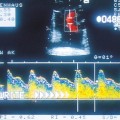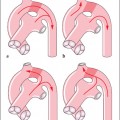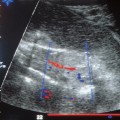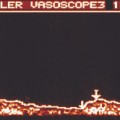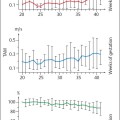21 | Diagnosis of the Uterine Tube by Transvaginal Sonography |
One in five couples in the United States is infertile; there are about 60–80 million such couples worldwide. Infertility is defined as the inability of a couple to conceive after one year of unprotected intercourse. Etio-logic factors affect the woman in about 45 % of cases, the man in 40 %, while 15 % remain undiagnosed. A distinction is made between primary infertility, if the couple has never conceived, and secondary infertility, if there has been a prior pregnancy (Runnebaum and Rabe 1994).
Investigation of the oviduct plays a cardinal role in the diagnostic workup of infertility. Besides hormonal and cervical factors, as well as factors relating to the man, the patency and functionality of the fallopian tube is the organic prerequisite for a successful meeting of the ovum and spermatozoon. In 30–40% of cases the uterine tube is the factor responsible for female infertility. In secondary infertility the involvement of the oviduct rises to 60%. The reasons for this might be genital infections, such as an asymptomatic salpingitis, or tubal endometriosis (Runnebaum and Rabe 1994).
Application of Ultrasound in Diagnosis of the Uterine Tube
The uterus and ovaries can be displayed by B-mode imaging without difficulty. Unless they are altered by pathology the uterine tubes are not accessible to this diagnostic procedure. For their investigation a fluid must be instilled through the cervix into the uterine cavity and thence into the lumens of the oviducts to make them echogenic for display by B-mode imaging (Rimbach et al. 1995).
Sonographic diagnosis of the fallopian tube by trans-cervical instillation of contrast medium has in the past few years become an ambulatory alternative to fluoro-scopic hysterosalpingography and chromolaparoscopy. The use of ultrasound for tubal diagnosis allows the affected patients to avoid the stresses of iodine-containing contrast media, radiographs, or anesthesia and surgery. Since the procedure does not use major resources either in terms of personnel or instrumentation, it can easily be integrated into routine clinical practice (Degenhardt 1995).
Display of the Tube by Contrast Sonography
This procedure uses an opalescent solution made up of microparticles of galactose and an aqueous galactose solution. The solution is made up just before the procedure by vigorously shaking D-galactose granules with a 20% aqueous D-galactose solution for 5 seconds. The shaking induces air microbubbles to settle on the surface of the galactose microparticles and initiates changes in the way sound is displayed sonographically. These changes include simple backscatter effects and an increase in contrast, caused by the oscillations induced by ultrasound in the air microbubbles.
One property essential for the clinical application of the contrast medium is stability under pressure while it is being introduced and during ultrasound examination. This property is not changed materially by the microbubbles in the suspension (Degenhardt 1995).
Stay updated, free articles. Join our Telegram channel

Full access? Get Clinical Tree



